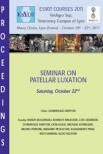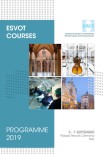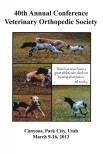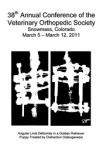Objective: The aim was to investigate the patellar ligament strain with varying degrees of tibial plateau angles (TPAs) after tibial plateau leveling osteotomy (TPLO) in a cranial cruciate ligament (CrCL)-deficient stifle during the stance phase.
Methods: 12 pelvic cadaver limbs were secured to a custom-built jig to mimic a loadbearing stance after which an axial load of 120 N was applied. Patellar ligament strain, change in strain, and percent change in strain were calculated on pre-TPLO (intact and transected CrCL) and post-TPLO tibial TPAs of -5°, 0°, 5°, 10°, and 15°. Strain was measured using a 3-D digital image correlation to calculate Green-Lagrange strain (E33). Data were compared using a linear mixed model and applying the Dunnett method of multiple comparisons (control was pre-TPLO intact CrCL).
Results: The post-TPLO TPAs of 0° and 5° increased in patellar strain compared to pre-TPLO intact CrCL constructs, whereas no significant changes were seen at a TPA of -5°, 10°, and 15°. Significant changes in patellar ligament strain were noted at a TPA of 0° and 5°. The percent change in strain differed at -5°, 0°, and 5° TPAs. The median magnitude of percent change in strain was 35.1%, 37.0%, 79.0%, -7.1%, and -21.1% for -5°, 0°, 5°, 10°, and 15°, respectively.
Conclusions: Significant increases in patellar ligament strain (CrCL-deficient stifle) during the stance phase were observed at TPAs of 0° and 5°.
Clinical relevance: A TPA post-TPLO > 5° and < 15° is less likely to cause an increase in patellar ligament strain; however, further research is needed to investigate the clinical relevance of these findings.









